FORKLIFT SAFETY 10 BEST WAYS TO AVOID FORKLIFT ACCIDENTS

Table of Contents
ToggleForklifts are the workhorses of many industries, helping to move heavy loads with ease. However, these powerful machines also pose a significant safety risk if not operated properly. Forklift accidents can lead to serious injuries, property damage, and even fatalities. That’s why it’s crucial to take forklift safety seriously and implement best practices to prevent accidents in the workplace. In this post, we’ll explore the top 10 ways to ensure forklift safety and avoid accidents. From proper training and inspections to load management and workplace design, we’ll cover everything you need to know to keep your workplace safe and productive.
Definition of forklifts
Forklifts, also known as lift trucks, are industrial vehicles used to lift, move, and transport heavy loads over short distances. They are commonly used in warehouses, distribution centers, construction sites, and manufacturing facilities to handle pallets, boxes, and other materials. Forklifts consist of a powerful engine, a mast or vertical lifting assembly, and two forks that can be raised and lowered to lift and move loads. They can range in size from small electric pallet jacks to large diesel-powered machines capable of lifting several tons. While forklifts are incredibly useful for moving heavy loads, they also pose a significant risk to operators, pedestrians, and other workers if not operated safely.
Importance of forklift safety
Forklifts are essential for many businesses, but they also represent a significant safety hazard. According to OSHA, forklift accidents result in about 85 fatalities and 34,900 serious injuries every year in the United States alone. These accidents are often preventable and are caused by a variety of factors, including operator error, lack of proper training, poor maintenance, and environmental hazards. A forklift accident can result in costly property damage, lost productivity, and most importantly, injury or death to workers. Therefore, it’s essential to implement proper forklift safety measures in the workplace to ensure the well-being of everyone on the job site. By following the 10 best ways to avoid forklift accidents that we’ll discuss in this post, you can help minimize the risk of accidents and keep your workplace safe and productive.

Brief overview of the 10 best ways to avoid forklift accidents.
Forklift safety is a critical aspect of any workplace that uses these machines. To ensure a safe workplace, here are ten of the best ways to avoid forklift accidents:
- Proper forklift safety measures must be established and enforced throughout the workplace. These measures should include guidelines for forklift operation, safety checks, and procedures for reporting accidents or near misses.
- All forklift operators must receive proper training before they can operate the equipment. This training should cover everything from the basics of forklift operation to advanced safety techniques.
- Regular inspections of forklifts and their components are crucial. This helps identify any issues that could cause an accident and allows for timely maintenance to keep the equipment in good condition.
- Load management is also critical. Operators must ensure that they distribute loads correctly, stack them securely, and follow weight limits to prevent accidents caused by falling or shifting loads.
- Pedestrian safety is another essential aspect of forklift safety. It’s important to establish clear pathways for pedestrians and forklifts and to mark areas where pedestrians are not allowed.
- Environmental factors, such as lighting and weather conditions, can also impact forklift safety. Ensuring adequate lighting and taking weather conditions into account when planning operations can help prevent accidents.
- Proper use of equipment is essential. Operators must follow all instructions and guidelines when operating forklifts, including loading and unloading procedures.
- Workplace design should also be taken into account. Designing the workplace with forklift operations in mind can help prevent accidents caused by obstacles or poor layout.
- Regular maintenance of forklifts is essential to keep them in good working condition. This includes everything from cleaning to replacing worn or damaged parts.
- Management and oversight play a crucial role in forklift safety. Effective management and oversight can help identify areas for improvement, enforce safety procedures, and prevent accidents caused by negligence.
By implementing these ten safety measures, businesses can help prevent forklift accidents and keep their employees safe.
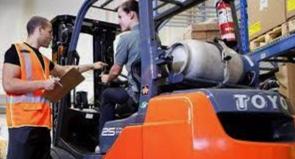
Importance of proper training
One of the most critical aspects of forklift safety is proper training. OSHA requires employers to ensure that forklift operators are trained and certified before they are allowed to operate a forklift in the workplace. Proper training should cover all aspects of forklift operation, including how to inspect the equipment, how to handle loads safely, how to maneuver the forklift, and how to operate the controls. Training should also include information on workplace hazards, such as pedestrian traffic patterns and environmental conditions that could affect forklift operation. Ongoing training and refresher courses are also necessary to ensure that forklift operators remain competent and up-to-date with safety standards. By providing proper training to forklift operators, employers can reduce the risk of accidents and ensure that everyone in the workplace is safe.
Training requirements for forklift operators
To meet OSHA’s training requirements, employers must ensure that their forklift operators receive both classroom instruction and hands-on training. The training should be conducted by a qualified instructor who has the knowledge and experience to teach forklift operation safely. The classroom instruction should cover the basics of forklift operation, such as the different types of forklifts, their components, and their safe operating procedures. The hands-on training should include actual operation of the forklift under the supervision of the instructor. During the hands-on training, the operator should learn how to start and stop the forklift, how to steer and brake safely, and how to handle different types of loads. They should also learn how to inspect the forklift before each use, how to identify potential hazards, and how to communicate effectively with other workers in the workplace. By ensuring that forklift operators receive proper training, employers can minimize the risk of accidents and keep their workers safe.

Ongoing training and refresher courses
Forklift operation is a skill that requires ongoing training and practice to maintain competency. Employers should provide ongoing training to forklift operators to ensure that they stay up-to-date with safety standards and best practices. Refresher courses should be provided at least once every three years, or whenever a forklift operator is involved in an accident or near-miss incident. The refresher courses should cover any changes in equipment, procedures, or regulations since the operator’s initial training. Additionally, refresher courses should also be provided if the operator shows signs of unsafe operation, such as improper use of the forklift or near-miss incidents. By providing ongoing training and refresher courses, employers can ensure that forklift operators remain competent and up-to-date with safety standards, which can help reduce the risk of accidents in the workplace.
Inspections
Regular inspections of forklifts are crucial to ensure that they are in safe working condition. Before each use, the forklift operator should conduct a pre-operational inspection to check for any defects or malfunctions. The inspection should include checking the brakes, steering, tires, lights, horn, and other critical components. If any defects are found, the forklift should be taken out of service immediately and not used until the necessary repairs have been made. Additionally, employers should conduct periodic inspections of their forklifts, as recommended by the manufacturer or at least once every 12 months, whichever comes first. These inspections should be conducted by a qualified technician who can identify any issues that may affect the safe operation of the forklift. By conducting regular inspections of forklifts, employers can ensure that they are in safe working condition and reduce the risk of accidents in the workplace.
Pre-operation inspections
As mentioned earlier, forklift operators should conduct a pre-operational inspection before each use of the forklift. The purpose of this inspection is to identify any defects or malfunctions that may affect the safe operation of the forklift. The pre-operational inspection should include checking the following components:
- Tires: Check for any damage or excessive wear.
- Forks: Check for any cracks or other damage.
- Mast: Check for any damage or wear on the lift chains, rollers, and rails.
- Fluid levels: Check the fluid levels for the hydraulic system, engine oil, and coolant.
- Brakes: Test the brakes to ensure they are working properly.
- Steering: Test the steering to ensure it is working properly.
- Lights and horn: Test the lights and horn to ensure they are working properly.
- Seatbelt: Ensure the seatbelt is in good condition and working properly.
If any defects or malfunctions are identified during the pre-operational inspection, the forklift should be taken out of service immediately, and the necessary repairs should be made before it is used again. By conducting pre-operational inspections, forklift operators can help ensure that the forklift is in safe working condition and reduce the risk of accidents in the workplace.
Post-operation inspections
In addition to pre-operational inspections, forklift operators should also conduct post-operation inspections after using the forklift. The purpose of this inspection is to identify any damage or issues that may have occurred during use. The post-operation inspection should include checking the following components:
- Forks: Check for any damage or bending.
- Mast: Check for any damage or wear on the lift chains, rollers, and rails.
- Fluid leaks: Check for any fluid leaks under the forklift.
- Tires: Check for any damage or excessive wear.
- Battery: Check the battery to ensure it is properly secured and there are no signs of damage or corrosion.
- Seatbelt: Ensure the seatbelt is in good condition and working properly.
If any issues are identified during the post-operation inspection, the forklift operator should report them to their supervisor immediately. By conducting post-operation inspections, forklift operators can help ensure that any issues or damage are identified and addressed promptly, reducing the risk of accidents in the workplace.

(Digital inspection provided by Techzworks)
Digital forklift inspections
Digital forklift inspections are becoming increasingly popular in the workplace. These inspections involve using digital devices to document and track the condition of forklifts and their components.
Digital inspections can be performed using a variety of tools, such as tablets or smartphones, and specialized software designed for this purpose. The software often includes a checklist of items to inspect, such as brakes, tires, and steering, and allows inspectors to document any issues they find.
One of the main benefits of digital inspections is that they can be performed quickly and efficiently, saving time and reducing the risk of errors. They also allow for real-time tracking of inspections and can provide instant alerts if any issues are found.
Another advantage of digital inspections is that they can provide detailed records of inspections and maintenance, which can be useful for compliance purposes and for tracking the history of a particular forklift. This information can be easily accessed and shared with relevant personnel, such as safety managers or equipment operators.
Digital inspections also provide a more standardized approach to inspections, ensuring that all necessary items are checked and documented consistently. This can help prevent oversights and ensure that all safety procedures are being followed.
Overall, digital forklift inspections can be an effective tool for improving safety in the workplace. By providing a more efficient, standardized, and detailed approach to inspections, they can help prevent accidents and ensure that forklifts are kept in good condition.
Importance of reporting issues
It’s essential for forklift operators to report any issues or defects they identify during pre- or post-operation inspections to their supervisors immediately. Failure to report such issues can lead to accidents, injuries, or even fatalities. Supervisors should also encourage and empower their employees to report any issues or concerns they have about forklift safety, even if they are minor. It’s better to address potential safety issues proactively than to wait for an accident to happen.
Reporting issues promptly can also help identify patterns of problems that may indicate a more significant safety concern. Employers should have a reporting process in place, and employees should be trained on how to report safety concerns effectively. This process should be easily accessible, and employees should feel comfortable using it without fear of retaliation. By encouraging open and transparent reporting, employers can create a safer workplace for their employees and reduce the risk of accidents caused by unsafe forklifts.

Load Management
Another essential factor in forklift safety is proper load management. Forklift operators should always ensure that the load they are carrying is stable and secure before lifting it. The load should be centered on the forks and should not exceed the forklift’s rated capacity. Overloading a forklift can lead to tip-overs, which can cause serious injuries or fatalities.
Forklift operators should also ensure that the load is distributed evenly on the forks, with the heaviest part of the load closest to the forklift. They should avoid carrying a load that obstructs their view, as it can increase the risk of accidents. Furthermore, operators should not carry loads that extend beyond the length of the forks, as it can cause instability and tip-overs.
Employers should also provide proper training on load management to their forklift operators. Training should cover how to calculate the load capacity of the forklift, how to determine the weight and center of gravity of the load, and how to properly secure the load to prevent it from shifting during transport. By properly managing loads, forklift operators can reduce the risk of accidents in the workplace and create a safer working environment.
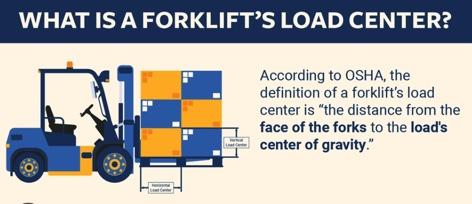
Load Capacity
Load capacity is another critical factor in forklift safety. Forklift operators should always ensure that they are aware of the forklift’s load capacity and should not exceed it. Exceeding the forklift’s load capacity can cause the forklift to tip over, leading to serious injuries or fatalities.
The forklift’s load capacity should be clearly displayed on the forklift and in the operator’s manual. Forklift operators should ensure that they are aware of the forklift’s load capacity for the specific load they are carrying. If the load exceeds the forklift’s capacity, operators should seek alternative lifting methods or use a different forklift with a higher load capacity.
Employers should also ensure that they have the appropriate forklifts for the loads they need to move. If the loads exceed the forklift’s capacity, employers should invest in larger or more robust forklifts. Employers should also ensure that their forklifts are well-maintained and regularly inspected to ensure that they are in good working condition and can safely handle their maximum loads.
By properly managing load capacity, employers can create a safer working environment and reduce the risk of accidents caused by overloaded forklifts.
Load placement
Load placement is another critical factor in forklift safety. Forklift operators should always ensure that they properly place the load on the forks before lifting it. The load should be centered and balanced, and the forks should be evenly spaced to provide maximum stability during transport.
When placing the load on the forks, operators should ensure that the load does not exceed the forks’ length. If the load extends beyond the forks, it can cause instability and increase the risk of tip-overs. Operators should also ensure that the load is positioned to provide maximum visibility during transport, reducing the risk of accidents caused by obstructed vision.
Employers should provide proper training on load placement to their forklift operators. Training should cover how to properly position the load on the forks, how to secure the load, and how to ensure that the load is centered and balanced. Employers should also ensure that their forklifts have the appropriate attachments, such as fork extensions, to safely handle larger or irregularly shaped loads.
By properly placing loads, forklift operators can reduce the risk of accidents caused by unstable loads or obstructed vision, creating a safer working environment.
Load securement
Proper load securement is crucial to forklift safety. Forklift operators should always ensure that the load is secured to prevent it from shifting or falling during transport. Unsecured loads can cause accidents, including tip-overs, collisions, or falling objects, leading to serious injuries or fatalities.
To properly secure the load, forklift operators should use appropriate attachments, such as straps, chains, or clamps. They should also ensure that the load is centered and balanced on the forks and that the load does not extend beyond the length of the forks. Operators should avoid using damaged or worn-out attachments that may fail during transport.
Employers should provide proper training on load securement to their forklift operators. Training should cover how to properly secure different types of loads, how to use various attachments, and how to inspect the attachments before use. Employers should also ensure that they have the appropriate attachments for the loads they need to move and that the attachments are in good working condition.
By properly securing loads, forklift operators can reduce the risk of accidents caused by unsecured loads, creating a safer working environment.
Pedestrian Safety
Pedestrian safety is another critical factor in forklift safety. Forklift operators should always be aware of their surroundings and ensure that they do not pose a risk to pedestrians in the area. Pedestrians should also be aware of their surroundings and avoid walking in areas where forklifts are operating.
To ensure pedestrian safety, employers should provide proper training to their forklift operators on how to safely operate the forklifts around pedestrians. Operators should be trained on how to use horns, flashing lights, or other warning signals to alert pedestrians of their presence. Pedestrian walkways and crossings should also be clearly marked, and pedestrians should be trained to use them.
Employers should also ensure that their forklifts are equipped with safety features such as backup alarms and warning lights to alert pedestrians of the forklift’s presence. Employers should also ensure that their facilities are designed to separate pedestrian traffic from forklift traffic to reduce the risk of accidents.
By prioritizing pedestrian safety, employers can create a safer working environment for both forklift operators and pedestrians. Forklift operators should always be vigilant and follow proper safety protocols when operating their forklifts near pedestrians, and pedestrians should be trained to be aware of their surroundings and avoid areas where forklifts are operating.
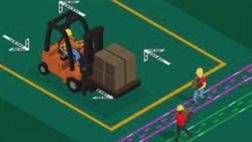
Pedestrian traffic patterns
Pedestrian traffic patterns are another essential aspect of forklift safety. Employers should ensure that pedestrian walkways and crossings are clearly marked and separate from forklift traffic. Pedestrian walkways should be wide enough to allow pedestrians to move comfortably and avoid areas where forklifts are operating.
Forklift operators should be trained to always yield to pedestrians and to slow down when approaching pedestrian areas. They should also avoid operating the forklifts in reverse when pedestrians are present to avoid accidents. Employers should ensure that forklift operators are aware of pedestrian traffic patterns and that they follow proper safety protocols when operating their forklifts near pedestrians.
Employers should also train pedestrians to follow proper safety protocols when walking near forklifts. Pedestrians should be aware of the areas where forklifts operate and should avoid them whenever possible. If it is necessary to cross an area where forklifts are operating, pedestrians should use designated crossing areas and be aware of their surroundings.
By ensuring proper pedestrian traffic patterns, employers can create a safer working environment for both forklift operators and pedestrians. Forklift operators should be trained to follow proper safety protocols when operating near pedestrians, and pedestrians should be trained to follow proper safety protocols when walking near forklifts.
Use of horns and alarms
The use of horns and alarms is another essential aspect of forklift safety, particularly in areas where pedestrians are present. Forklift operators should always use horns or other warning signals to alert pedestrians and other workers of their presence. These warning signals can be critical in preventing accidents and should be used consistently and appropriately.
Employers should ensure that their forklifts are equipped with horns or other warning signals that meet OSHA standards. Forklift operators should be trained to use these signals effectively and to avoid using them excessively, which can cause confusion or even harm to workers.
Horns and alarms should also be tested regularly to ensure that they are working correctly. Employers should establish protocols for testing horns and alarms and ensure that these protocols are followed consistently.
By prioritizing the use of horns and alarms, employers can create a safer working environment for both forklift operators and pedestrians. Forklift operators should be trained to use these signals effectively and to avoid using them excessively, and employers should ensure that their forklifts are equipped with proper warning signals and that they are tested regularly.
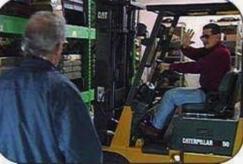
Communication with pedestrians
Effective communication between forklift operators and pedestrians is crucial to preventing accidents. Forklift operators should be trained to communicate effectively with pedestrians, particularly in areas where there is limited visibility.
When approaching a pedestrian, forklift operators should make eye contact and signal their intent with hand signals or other non-verbal cues. If possible, they should also verbally communicate their intent, such as announcing their direction of travel or letting pedestrians know when they will be stopping.
Pedestrians should also be encouraged to communicate with forklift operators, particularly if they are entering an area where forklifts are operating. They should make eye contact with forklift operators and use hand signals or other non-verbal cues to signal their intent.
By promoting effective communication between forklift operators and pedestrians, employers can create a safer working environment for everyone. Forklift operators should be trained to communicate effectively with pedestrians, and pedestrians should be encouraged to communicate with forklift operators to ensure that they are aware of each other’s presence and intent.
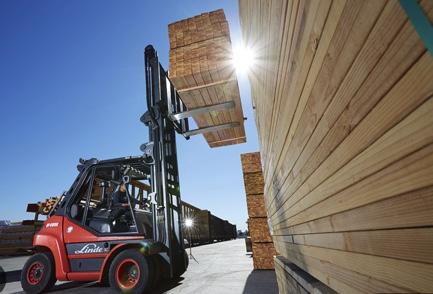
Environmental Factors
Environmental factors, such as lighting, flooring, and weather conditions, can also play a role in forklift safety. Employers should ensure that their workplaces are well-lit, with proper lighting in areas where forklifts are operating. This can help to prevent accidents caused by limited visibility.
Employers should also ensure that flooring is in good condition, with no obstacles or debris that could cause forklifts to tip or lose control. Weather conditions, such as rain or snow, can also affect forklift safety, as they can create slippery surfaces that increase the risk of accidents. Employers should establish protocols for operating forklifts in inclement weather and ensure that their forklift operators are trained to operate safely in these conditions.
By considering environmental factors, employers can create a safer working environment for forklift operators and other workers. Proper lighting and flooring conditions, as well as protocols for operating in inclement weather, can help to prevent accidents and ensure that everyone stays safe.
Hazardous environments
Forklifts are often used in environments where there are hazardous materials or conditions. For example, forklifts may be used in warehouses where there are chemicals or flammable materials, or in areas where there are extreme temperatures or hazardous fumes.
Employers should ensure that their forklift operators are trained to operate safely in these hazardous environments. This may include providing specialized training on handling hazardous materials, using personal protective equipment (PPE), and following proper procedures for working in hazardous environments.
Employers should also establish protocols for operating forklifts in hazardous environments, such as providing designated routes for forklifts or requiring forklift operators to wear specific PPE.
By prioritizing safety in hazardous environments, employers can help to prevent accidents and protect the health and well-being of their workers. Forklift operators should be trained to operate safely in these environments, and employers should establish protocols and provide necessary PPE to ensure that everyone stays safe.
Outdoor conditions
Forklifts are not just used indoors, but also outdoors in various settings such as construction sites, shipping yards, and ports. These environments present their own unique set of challenges and hazards that need to be taken into consideration to ensure forklift safety.
Outdoor conditions such as uneven terrain, wind, rain, and snow can increase the risk of accidents. Therefore, employers should ensure that forklift operators receive training on safe operation in outdoor environments. This includes learning how to navigate through rough terrain, use proper braking techniques, and adapt to changing weather conditions.
Additionally, forklift operators should be equipped with the appropriate PPE to protect themselves from the elements, such as high-visibility jackets, gloves, and boots.
By providing appropriate training and PPE, employers can help to mitigate the risks associated with outdoor forklift operation and ensure that their workers remain safe. Forklift operators should be trained to safely operate in different outdoor conditions and adapt to changing weather patterns to avoid accidents.
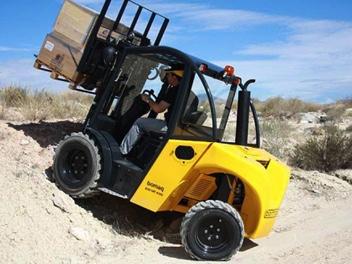
Uneven surfaces
Uneven surfaces such as ramps, inclines, and declines can pose a challenge for forklift operators. In such situations, the load can shift, and the forklift can tip over, causing severe injuries or even fatalities.
To ensure forklift safety on uneven surfaces, employers should provide training to their operators on how to safely navigate such areas. This may include learning how to maintain the correct speed, the angle at which to approach the surface, and how to properly position the load to avoid tipping.
Additionally, employers should ensure that their forklifts are equipped with the appropriate tires and brakes to handle the uneven terrain safely. The load capacity of the forklift should also be taken into account when operating on uneven surfaces.
By providing appropriate training and equipment, employers can help to reduce the risk of accidents on uneven surfaces. Forklift operators should be trained to navigate these surfaces safely, and employers should ensure that their forklifts are equipped with appropriate tires and brakes to handle the terrain.
Proper Use of Equipment
Proper use of equipment is essential for maintaining forklift safety. Operators should ensure that they are using the correct forklift for the job and that the forklift is in good working condition. Employers should have regular maintenance and inspection programs in place to ensure that all equipment is in good condition.
Additionally, forklift operators should be trained to use all equipment properly, including attachments such as clamps and forks. Improper use of attachments can cause accidents and lead to serious injuries.
Employers should also establish guidelines for forklift usage, including proper start-up and shut-down procedures and guidelines for fueling and charging. By following these guidelines, forklift operators can reduce the risk of accidents and ensure that their equipment is properly maintained.
By ensuring that forklift operators are trained to use equipment properly and that all equipment is properly maintained, employers can help to prevent accidents and protect the health and safety of their workers. Employers should establish guidelines for equipment usage and have regular maintenance and inspection programs in place to ensure that all equipment is in good working condition.

Use of seatbelts
One of the simplest yet most effective ways to improve forklift safety is to require the use of seatbelts. Seatbelts can prevent forklift operators from being thrown from the forklift in the event of an accident, reducing the risk of serious injury or death.
Employers should establish policies requiring the use of seatbelts at all times when operating a forklift. Employers should also ensure that forklifts are equipped with properly functioning seatbelts and that operators are trained on their proper use.
Additionally, employers should encourage a safety culture in which all employees understand the importance of wearing seatbelts and other safety equipment at all times. By promoting a culture of safety, employers can help to reduce the risk of accidents and create a safer workplace for all employees.
In conclusion, the use of seatbelts is a simple yet effective way to improve forklift safety. Employers should establish policies requiring the use of seatbelts, ensure that forklifts are equipped with properly functioning seatbelts, and promote a safety culture in which all employees understand the importance of wearing safety equipment at all times. By taking these steps, employers can help to prevent accidents and protect the health and safety of their workers.
Use of controls
Forklift operators must be trained to properly use the controls of their forklift. Using the wrong control or not using them properly can lead to serious accidents. Therefore, it is important for operators to be familiar with the controls of their forklift and know how to use them correctly.
Employers should ensure that operators are trained to use all controls of the forklift, including the accelerator, brake, horn, and hydraulic controls. Additionally, operators should be trained to use the controls smoothly and precisely to avoid sudden movements that could cause the forklift to tip over or lose its load.
Employers should also ensure that all controls are functioning properly and are well-maintained. Operators should be trained to recognize any malfunctions or problems with the controls and to report them immediately to their supervisor.
By ensuring that operators are trained to properly use the controls of their forklift and that all controls are functioning properly, employers can help to prevent accidents and promote a safer workplace.
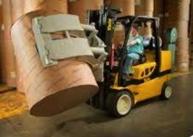
Use of attachments
Forklift attachments can greatly expand the versatility of a forklift and improve productivity. However, their use also adds complexity and can create additional safety hazards. It is important for operators to be trained on the proper use of any attachments and to use them in accordance with manufacturer recommendations.
Employers should ensure that operators are trained to properly use any attachments and to inspect them before use. Additionally, operators should be trained to recognize any problems or malfunctions with the attachments and to report them immediately to their supervisor.
It is also important for employers to ensure that any attachments are compatible with the forklift and that they are installed and removed correctly. Improper installation or removal can lead to accidents and equipment damage.
By ensuring that operators are properly trained on the use of attachments and that they are used in accordance with manufacturer recommendations, employers can help to prevent accidents and promote a safer workplace.
Workplace Design
The design of the workplace can greatly impact the safety of forklift operations. Employers should ensure that the workplace is designed with forklift safety in mind.
This includes ensuring that the layout of the workplace allows for safe forklift operations, such as clear paths and adequate turning radius. Additionally, the workplace should be designed to minimize hazards, such as blind corners and narrow aisles.
Employers should also ensure that the workplace is well-lit and that any obstructions or hazards are clearly marked. This can help to prevent accidents caused by poor visibility.
By designing the workplace with forklift safety in mind, employers can help to prevent accidents and promote a safer workplace.
Traffic flow patterns
Employers should establish traffic flow patterns in the workplace to help prevent collisions between forklifts and other equipment, as well as pedestrians. This can include establishing one-way traffic lanes, separate pedestrian walkways, and designated parking areas for forklifts and other equipment.
It is also important to clearly mark traffic flow patterns and to ensure that all employees are aware of them. This can be done through the use of signs and markings on the floor.
Employers should also ensure that traffic flow patterns are regularly evaluated and updated as needed. Changes in the workplace layout or processes may require changes to traffic flow patterns.
By establishing and maintaining traffic flow patterns, employers can help to prevent accidents and promote a safer workplace.
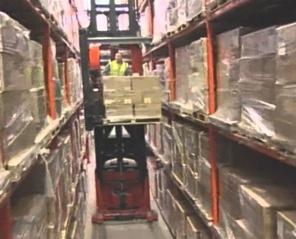
Narrow aisles
Narrow aisles can create hazards for forklift operations. Employers should ensure that the workplace is designed to minimize the use of narrow aisles.
Where narrow aisles are necessary, employers should take steps to ensure safe forklift operations. This can include limiting the speed of forklifts in narrow aisles, using mirrors or other aids to improve visibility, and ensuring that operators are properly trained on the safe operation of forklifts in narrow aisles.
Employers should also ensure that narrow aisles are clearly marked and that pedestrians are prohibited from entering them.
By minimizing the use of narrow aisles and taking steps to ensure safe forklift operations where they are necessary, employers can help to prevent accidents and promote a safer workplace.
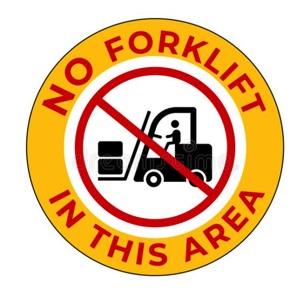
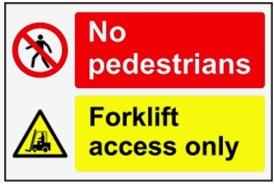
Clear signage
Clear signage is essential for promoting forklift safety in the workplace. Employers should ensure that all signs related to forklift operations are clearly visible, well-maintained, and easy to understand.
This can include signs indicating the location of forklift parking areas, speed limits, and traffic flow patterns. Signs indicating the maximum load capacity of forklifts should also be prominently displayed.
Additionally, employers should use signs to indicate hazards, such as blind corners or uneven surfaces. These signs should be clearly visible and easily understood.
By using clear signage, employers can help to promote forklift safety and prevent accidents in the workplace.
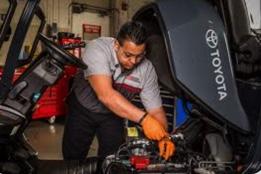
Maintenance
Proper maintenance of forklifts is essential for promoting safety in the workplace. Employers should establish a regular maintenance program for forklifts and ensure that all forklifts are properly maintained.
This can include regular inspections of forklifts to identify and address issues before they become more serious, as well as regular servicing of forklifts to ensure that they are operating at optimal levels.
Employers should also ensure that all maintenance is performed by qualified technicians who are trained to work on forklifts.
By properly maintaining forklifts, employers can help to prevent accidents and promote a safer workplace.
Regular maintenance schedule
Establishing a regular maintenance schedule for forklifts is critical for promoting forklift safety in the workplace. Employers should establish a schedule that includes regular inspections, servicing, and maintenance of all forklifts.
The maintenance schedule should be based on the manufacturer’s recommendations for each type of forklift, as well as any specific requirements identified by the employer or its safety professionals.
The schedule should also be designed to minimize downtime for forklifts, while ensuring that all necessary maintenance is performed in a timely manner.
By establishing a regular maintenance schedule for forklifts, employers can help to ensure that their forklifts are in good working order and reduce the risk of accidents in the workplace.
Reporting issues
Employees should be encouraged to report any issues with forklifts, including any mechanical problems or safety hazards that they notice during their work.
Employers should establish a clear reporting process for these issues, which should include reporting to a designated safety professional or supervisor.
Employees should also be provided with training on how to identify and report issues with forklifts, as well as information on the importance of reporting these issues for workplace safety.
By encouraging employees to report issues with forklifts and addressing these issues promptly, employers can help to promote a culture of safety in the workplace and prevent accidents involving forklifts.
Importance of addressing issues immediately
Addressing issues with forklifts immediately is critical for maintaining workplace safety. Employers should take prompt action to address any issues that are reported, such as scheduling repairs or maintenance, or removing the forklift from service until the issue can be resolved.
Delaying action on reported issues can increase the risk of accidents and compromise workplace safety. In addition, addressing issues promptly can help to prevent more serious problems from developing, which could result in more extensive repairs or even replacement of the forklift.
By addressing issues with forklifts immediately, employers can help to maintain a safe workplace and prevent accidents involving forklifts.
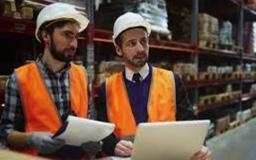
Management and Oversight
Effective management and oversight are critical for maintaining a safe workplace and preventing accidents involving forklifts. Employers should ensure that they have established policies and procedures for the safe operation of forklifts, and that these policies and procedures are communicated clearly to all employees who operate forklifts.
In addition, employers should provide adequate supervision and oversight of forklift operations to ensure that employees are following established safety protocols and that issues with forklifts are identified and addressed promptly.
Regular safety audits and inspections can also help to identify potential safety hazards and areas for improvement in forklift operations. Employers should establish a regular schedule for safety audits and inspections, and ensure that any issues identified are addressed promptly.
By providing effective management and oversight of forklift operations, employers can help to promote a culture of safety in the workplace and prevent accidents involving forklifts.
Management responsibility
Ultimately, the responsibility for maintaining a safe workplace and preventing accidents involving forklifts falls on management. Employers should ensure that they have established policies and procedures for the safe operation of forklifts, and that these policies and procedures are followed by all employees who operate forklifts.
In addition, employers should provide adequate training and supervision for forklift operators, and establish a regular schedule for inspections and maintenance of forklifts.
Employers should also provide a reporting system for employees to report any issues with forklifts or safety hazards in the workplace. Employers should take prompt action to address any reported issues and ensure that employees are aware of the steps being taken to maintain workplace safety.
By taking responsibility for maintaining a safe workplace and preventing accidents involving forklifts, employers can help to promote a culture of safety and prevent injuries and accidents in the workplace.
Reporting requirements
Employers should establish a reporting system for employees to report any issues with forklifts or safety hazards in the workplace. This system should be communicated clearly to all employees and should include the following:
- A clear explanation of what types of issues should be reported, such as equipment malfunctions, unsafe conditions, or near misses involving forklifts.
- Contact information for reporting issues, including the name and contact information for a designated safety officer or supervisor.
- A clear explanation of the steps that will be taken to address reported issues, including an expected timeline for resolution.
- Assurance that employees who report issues will not face retaliation or negative consequences for reporting safety hazards.
By establishing a clear reporting system and communicating it effectively to all employees, employers can help to identify potential safety hazards and address them promptly. This can help to prevent accidents involving forklifts and promote a culture of safety in the workplace.
Safety culture
Creating a safety culture in the workplace is essential to preventing forklift accidents. A safety culture is one in which safety is prioritized above all else, and all employees are actively engaged in identifying and addressing safety hazards. Some key elements of a safety culture include:
- Leadership commitment: Management should prioritize safety and actively promote a culture of safety throughout the workplace.
- Employee involvement: All employees should be engaged in identifying and reporting safety hazards, and should be encouraged to participate in safety training and other safety initiatives.
- Open communication: There should be open lines of communication between employees and management to ensure that safety concerns are addressed promptly.
- Continuous improvement: Employers should continually evaluate and improve their safety programs and practices to ensure that they remain effective over time.
By creating a safety culture in the workplace, employers can help to ensure that all employees are committed to preventing forklift accidents and other safety hazards. This can help to promote a safer work environment and reduce the risk of injuries or fatalities caused by forklifts.
Forklifts are essential tools for many industries, but they can also be dangerous if not operated safely. By following the ten best practices for forklift safety outlined in this article, employers can help to reduce the risk of accidents and injuries caused by forklifts. These best practices include proper training, regular inspections, load management, pedestrian safety, environmental factors, equipment use, workplace design, maintenance, and management and oversight. By prioritizing safety and creating a safety culture in the workplace, employers can help to ensure that all employees are committed to preventing forklift accidents and promoting a safe work environment.

Recap of the 10 best ways to avoid forklift accidents
- Proper Training: Operators must receive thorough training before operating a forklift.
- Inspections: Regular pre- and post-operation inspections of forklifts are essential for identifying any potential issues.
- Load Management: Proper load management, including load capacity, load placement, and load securement, is crucial for safe forklift operation.
- Pedestrian Safety: Pedestrian traffic patterns, communication, and the use of horns and alarms help to ensure the safety of those working around forklifts.
- Environmental Factors: Forklift operation should take into account any hazardous environments, outdoor conditions, or uneven surfaces.
- Proper Use of Equipment: Proper use of seatbelts, controls, and attachments is critical to safe forklift operation.
- Workplace Design: Traffic flow patterns, narrow aisles, and clear signage help to ensure safe forklift operation.
- Maintenance: Regular maintenance and immediate reporting of any issues is necessary to keep forklifts in good working condition.
- Management and Oversight: Management must take responsibility for forklift safety, including reporting requirements and creating a safety culture.
- Reporting Issues: Finally, all employees should be encouraged to report any issues or potential hazards related to forklift operation.
By following these ten best practices, employers can help to prevent forklift accidents and promote a safe work environment for all employees.
Importance of forklift safety
Forklifts are powerful industrial machines that can be dangerous when not operated properly. Forklift accidents can result in serious injuries or even fatalities. It is essential for employers to prioritize forklift safety in the workplace. This not only helps to protect the health and well-being of employees but also reduces the risk of property damage and costly lawsuits. Employers who prioritize forklift safety also tend to have better productivity, fewer equipment breakdowns, and lower insurance rates. In short, forklift safety is essential for a safe, productive, and profitable workplace.
In conclusion, there are many ways to ensure forklift safety in the workplace. By prioritizing training, inspections, load management, pedestrian safety, equipment use, workplace design, maintenance, and management and oversight, employers can reduce the risk of accidents and promote a safe and productive work environment. It is the responsibility of employers to prioritize forklift safety and ensure that their employees are trained and equipped to operate forklifts safely. With proper training, equipment use, and workplace design, accidents can be prevented, and the workplace can be safer and more productive for everyone. We urge all employers to prioritize forklift safety and take the necessary steps to prevent accidents and injuries in their workplaces.